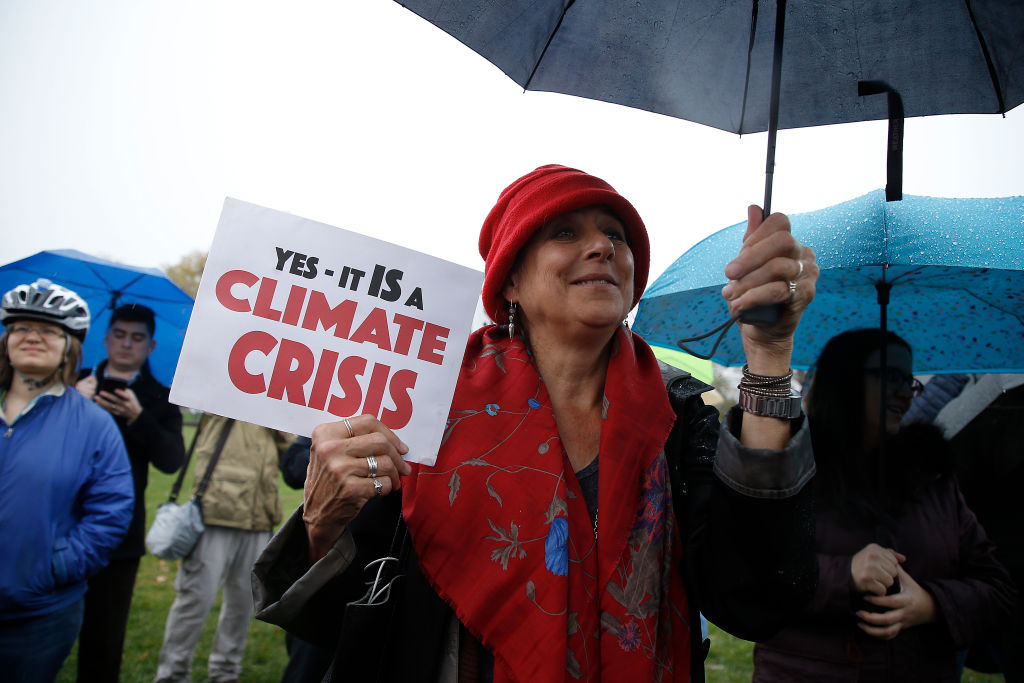
As the world has reeled from crisis after crisis in recent years, world leaders have, with only a few exceptions, repeatedly insisted that they remain committed to tackling climate change. But they are failing to keep that promise, says a bleak new United Nations report, and the globe may soon feel the dire effects of inaction—including temperatures that rise to double the target set in the Paris Agreement—without “rapid and transformational action.”
The report, from the United Nations Environment Programme (UNEP), points directly at most of the world’s largest economies as the chief culprits in the global failure to stem greenhouse gas emissions. Only five countries in the G20—a forum representing 20 of the world’s biggest economies—have committed to eliminating their carbon footprints. Seven, including the U.S., Brazil and Canada, are failing to meet even their feeble commitments made under the Paris Agreement four years ago while still others, like Russia and India, are keeping their promises but only because they set low targets at the outset.
Collectively, if countries around the world meet their current commitments, it would still result in more than 3°C of warming over pre-industrial levels by the end of the century, blowing past the “well below” 2°C target set in the Paris Agreement, according to the report, which comes ahead of this year’s U.N. climate conference in Madrid.
Last year, a landmark U.N. report warned that the world would face catastrophic consequences—from the destruction of the world’s coral reefs to the impoverishment of hundreds of millions of people—if temperatures warmed significantly more than 1.5°C. Temperature rise of 4°C would drive a humanitarian calamity, including sea level rise that tops 10 meters (32 ft), frequent droughts and heatwaves that make parts of the world unlivable, and the extinction of half the planet’s species.
“While there’s been progress on policies, there’s been progress on ambition, we still have not seen a peaking of emissions,” says Niklas Hagelberg, UNEP’s climate change coordinator, highlighting the need for aggressive action. “There is much more that needs to be done.”
Who should be TIME’s Person of the Year for 2019? Cast your vote in the reader poll.
Most specifically, global greenhouse gas emissions need to peak next year and then almost immediately decline precipitously. To keep temperatures from rising more than 1.5°C by the end of the century, emissions would need to drop more than 7% each year for the next decade, the report says. Over the last decade, worldwide emissions rose on average 1.5% each year. And the longer countries wait to make these necessary changes, the more difficult and expensive they will become to implement in time to stave off more than 1.5°C of warming.
“The bottom line is governments are not where they need to be today. That’s a fact,” says Robert Orr, an advisor to the U.N. secretary general on climate and dean of the University of Maryland School of Public Policy.
UNEP produces this so-called “gap report” annually, but this year’s iteration comes at an especially critical time as the dire scientific reality converges with a thorny political one. Under the Paris Agreement, countries are supposed to announce new and improved plans to reduce emissions before next year’s U.N. climate conference in Glasgow. That process occurs only once every five years, and, because of the urgency outlined in the gap report, climate scientists and policymakers say 2020 may be the last opportunity to prevent a 1.5°C-increase scenario.
Many world leaders remain committed to that process. This year, more than 60 countries across the globe committed to reduce their carbon footprints to zero by 2050, but the majority of those nations are small countries with relatively low per-capita and overall emissions. The G20 economies produce 78% of the world’s emissions, according to the report, and local political and international geopolitical developments have distracted leaders of a number of those large emitters. Internally, the U.S. is dealing with impeachment; China with protesters in Hong Kong; and the European Union with Brexit. Internationally, the world is entangled in a trade war.
But there are some indicators that the reality of climate change may be stark enough to wake up those countries. Protests and youth activism have changed political dynamics, particularly in Europe, and a slew of extreme weather events from the Arctic to Australia are creating pressure on leaders to take bolder steps to reduce emissions. A few specific geopolitical developments may be key in changing the debate. The EU and China are holding a landmark summit in Germany in September, which climate experts say could yield an important bilateral climate deal that cements the two powers as the world’s climate leaders, and the EU has promised to unveil a border carbon tax that imposes a fee on imports from countries that refuse to act on climate.
Whatever happens, the cold, hard truth remains that given today’s current political reality, from China’s commitment to building coal-fired power plants to the continued inaction in the U.S., the aggressive goals needed to stymie catastrophic climate change are very likely out of reach.
But that’s not an excuse to step back, say climate scientists and policymakers. The results of 2°C of warming will be worse than 1.5°C, and the results of 3°C far worse than 2°C. “Every degree, every half a degree counts,” says Laurence Tubiana, CEO of the European Climate Foundation and a key framer of the Paris Agreement. “We don’t have to be more optimistic or pessimistic, we have to be activists; and we have to win every battle.”
More Must-Reads from TIME
- Cybersecurity Experts Are Sounding the Alarm on DOGE
- Meet the 2025 Women of the Year
- The Harsh Truth About Disability Inclusion
- Why Do More Young Adults Have Cancer?
- Colman Domingo Leads With Radical Love
- How to Get Better at Doing Things Alone
- Michelle Zauner Stares Down the Darkness
Write to Justin Worland at justin.worland@time.com